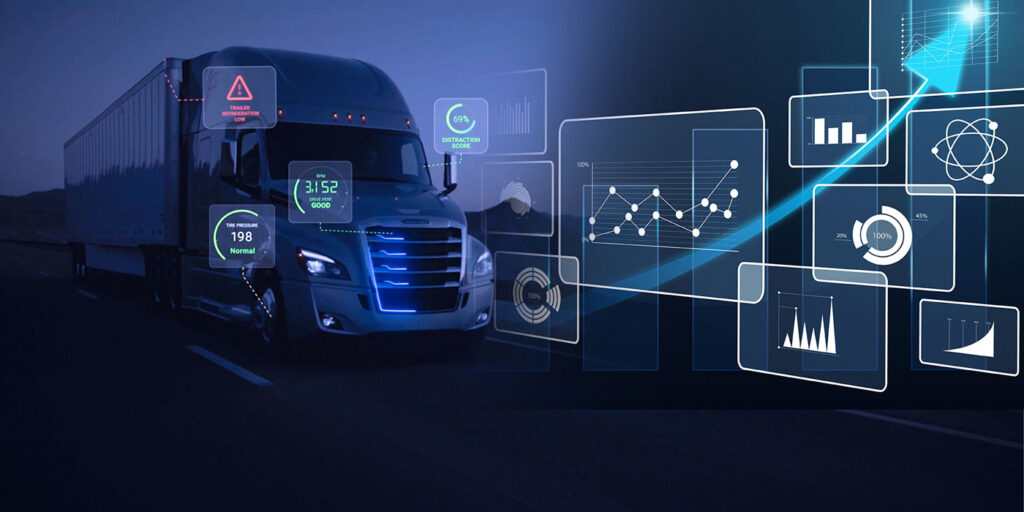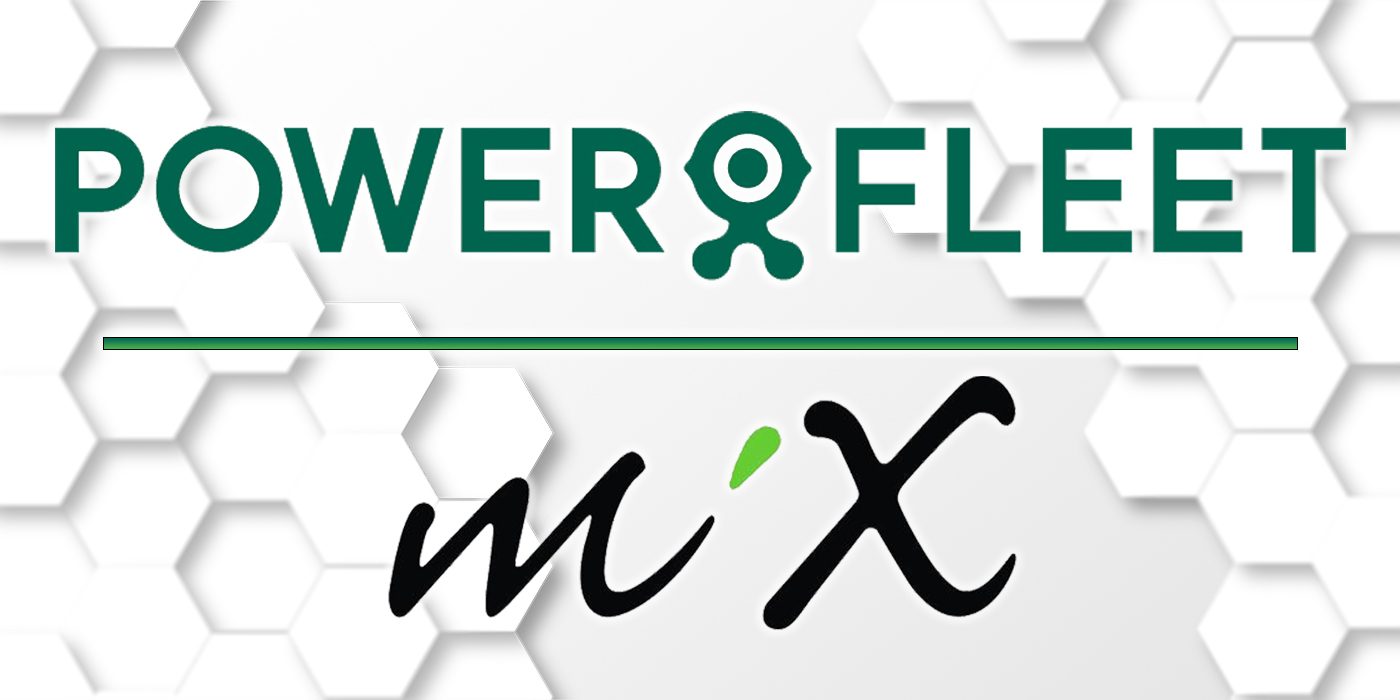I’ll be the first to admit that we talk about truck data integrations too broadly. We toss around terms like API and cloud access, but fleets know that getting data from one company and into the hands of another is easier said than done. Truck data integrations can be painful. They’re complicated to start with, and then you add in the powerful politics that swirl around data ownership, access and privacy and integration gears can quickly grind to a halt.
So how do we make this easier?
“The way I look at it is that telematics service providers were a closed ecosystem. You signed up with one telematics provider, and you were kind of locked in. That’s what our customers told us,” said Sanjiv Khurana, general manager, connected services group, Daimler Truck North America (DTNA). “You’re stuck with the hardware. You’re stuck with the applications and those applications only talk to each other. You can’t pick and choose a driver app from supplier A and navigation app from supplier B and a workflow app from supplier C.
“What we have done with our Virtual Vehicle is basically unlock all of that.”
DTNA collaborated with Platform Science to develop an open platform that works natively with OEMs that, in the companies’ words, “enables fleets to access telematics, software solutions, real-time vehicle data and third-party applications directly from their vehicles.”
But it’s better to think of Virtual Vehicle as a layer of data interfaces that sit on top of the truck. That data can be pulled into the cloud for integrations at the API level or, unique to this new platform, can be connected to via Bluetooth or WiFi. So if you’re standing next to the truck with a tablet or phone, you can securely connect, open an app that interacts with the truck ecosystem’s data and you’re off and running.
“The hardware needed is already built into the truck,” Khurana said. “All of the data exists in the Virtual Vehicle. This allows our customers to pick and choose what apps they want to use. A lot of our large fleets, enterprise customers, have their own apps. This allows them to pull the data in and use them.”
From ‘big data’ to specific data
Platform Science has been one of the bigger names in this second (or maybe third at this point) wave of technology companies entering the trucking space and partnering with big names. In May 2020, DTNA announced the partnership that would bring today’s Virtual Vehicle to life. Jack Kennedy, Platform Science CEO and co-founder, explained that Platform Science is the infrastructure that allows increased truck data access.
“Fleet managers or drivers just show up with a device, log in and go,” he said. “That is the first, to my knowledge, time that’s happened with a platform that is open to other third-party applications, fleets’ applications, shippers’ applications, and the OEM’s applications–everybody can participate in this way.”
Kennedy noted that the truck data usage trend has moved to solving specific issues that are unique to the fleet customer, as opposed to coming up with solutions and simply handing them to fleets expecting them to use them.
“A term you don’t hear that much anymore is ‘big data,’” he said. “A few years ago, everyone’s throwing around the term ‘big data’ because nobody could figure out what small data was. But nobody needs big data. Fleets need specific data to do specific things that provide measurable ROI and experiences. That’s what we’re talking about here, and we’re making that possible now.”
Just like the two-pronged data access approach between access in the cloud and access via Bluetooth at the truck, so too are there two paths to telematics solutions from the DTNA perspective. First, Virtual Vehicle does not replace Detroit Connect. That OEM platform is still squarely focused on uptime, safety, and fuel efficiency, namely anything that relates to the OEM engineering of the vehicle. Virtual Vehicle sits beside that data-driven offering. It’s the connection point for other solutions that sit outside the realm of the OEM.
Let’s look at a few examples
Driver training is a huge growth telematics segment that’s bringing together vehicle data as well as in-cab video, artificial intelligence and human review to increase safety. This type of application would typically be produced and supported by a third-party provider. DTNA’s Virtual Vehicle is how you get the data off of the truck and into that app.
“They don’t need to worry about the hardware,” Khurana said. “All of the data from the truck is available, whether it’s the telematics data or video data, or in the future we might have other kinds of data sensors in the truck. All of the data is now basically available in this Virtual Vehicle platform whether it’s through connection to the cloud or a connection from the truck to a local tablet.”
Enter the inevitable comparison to a smartphone.
“You have applications that work locally on your smartphone, you have applications that rely completely on feeds from the cloud, and you may have applications that pull data from multiple applications and make a third application provide value to you,” Kennedy said. “We do the same thing. We’re eliminating the question of: Where do I get my data? Drivers, fleets, developers–they’re not interested in whether that data comes from the cloud or the Edge or the mobile device, they just want it to work. So we provide all the underpinnings to allow that to happen, as well as the tools for the fleets to then, in turn, manage those applications and distribute them to the specific drivers and specific devices that those applications.”
Consider ELDs.
Kennedy noted that the “D” in that acronym stands for “device.” With Virtual Vehicle, you can cross off that D and just consider the “electronic logs” portion.
“Anybody who provides an ELD today can provide that software without a device and have that live in this ecosystem so that a customer who’s using Product A can switch to Product B without changing hardware,” Kennedy said. “On those ELDs, some of them stream data directly from the cloud and other customers prefer that to be local. Either way, it doesn’t matter to us, we provide the connectivity, so when the customer makes their choice of an electronic log provider, they get they’re already set to go. There’s no decision on hardware that has to be made.”
“Through the Virtual Vehicle connection, you can get the data directly from the truck without having to plug anything in,” Khurana repeated. “You don’t need to have any hardware or any kind of wired connection to the truck. You can extract the data directly from the truck. Additionally, you create an application on the platform, on the Virtual Vehicle platform, and that application can then scan the truck and get whatever information it needs to run whatever application it needs to do.”
Yes, I’m hammering on the repetition here because, honestly, it can be difficult to wrap your head around when the industry is so used to hardware-driven data collection and integrations. We’ve loaded plenty of virtual ink surrounding the 3G sunset and the need to upgrade to 4G LTE devices, for example. Virtual Vehicle eliminates that situation, and it opens up a world of app possibilities.
Coding your own solutions
The ebb and flow of the truck telematics industry is currently shifting back toward specific apps developed by fleets (oftentimes in-house) to address their specific needs. Where four years ago, telematics providers were leveling the playing field between small and mid-sized fleets compared to big fleet telematics capabilities, larger fleets are realizing the power of their own data.
Virtual Vehicle aims to, once again, make data usage and analysis more approachable, but this time, also more specific to fleet needs.
“Historically, if you wanted to innovate in the vehicle world, you had to build the entire stack–all the way to the hardware that was attached to that engine; whether you were scanning it for maintenance purposes or driver coaching,” Kennedy said. “It’s a very limited universe of people who could make that investment and had that full stack technical expertise to even begin thinking about solving problems. Now, all people need to do is have some knowledge, be creative and be able to access APIs and write applications. And that’s an infinitely larger universe.”
That’s not to say that fleets are on their own to develop solutions. Kennedy went on to explain that a wide variety of fleet-focused apps will also be available to leverage Virtual Vehicle data.
“Through the early adopter program we’ve been creating the processes to accelerate the onboarding of new applications and new partners,” he said. “Those applications live in a catalog that’s accessed by the fleet operator. Clearly, it’s not the driver that installs the apps. The fleet operator says, ‘This driver gets these and that driver gets those.’ So, at that point, the fleet isn’t really doing anything other than literally dropping and dragging applications in a portal to a specific driver or driver subset.”
Stay tuned for a look at how this type of connectivity could impact the development of data-driven solutions in the future.













